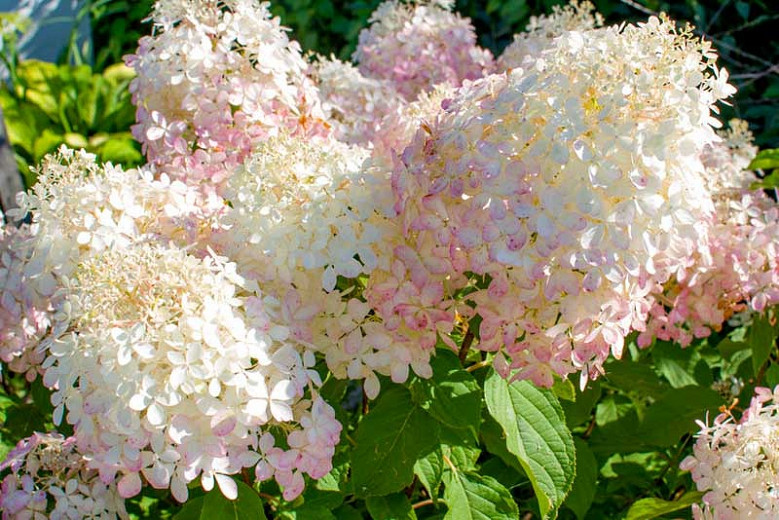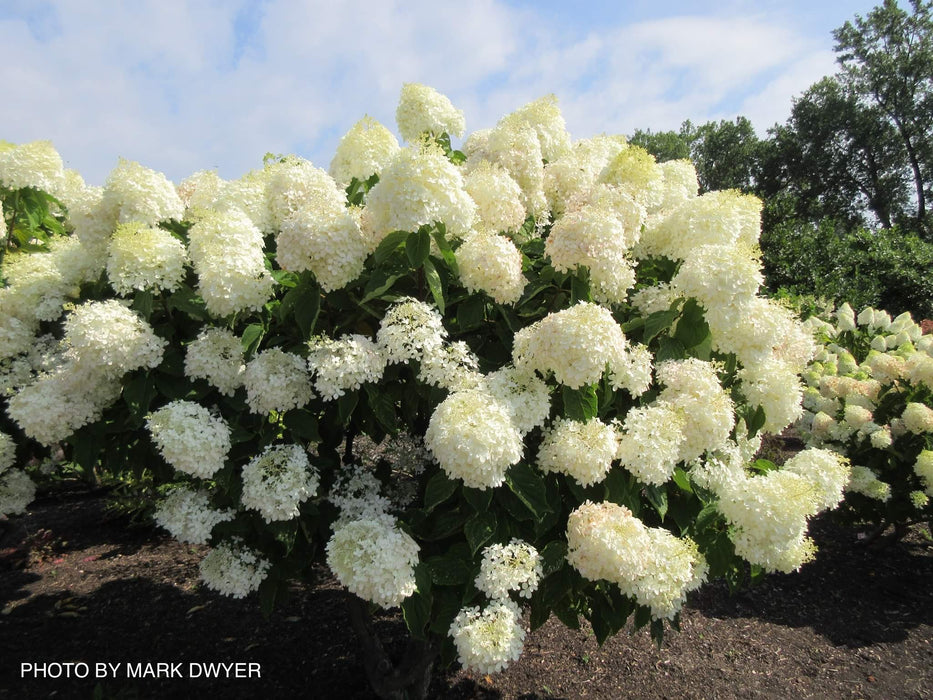Phantom Paniculata: The Showstopping Hydrangea That's
Phantom Paniculata: The Show-Stopping Hydrangea That's Easy to Grow
If you're looking for a hydrangea that will make a big statement in your garden, look no further than Phantom Paniculata. This stunning shrub is known for its huge, cone-shaped flower clusters that can reach up to 15 inches in length. The flowers start out white and then gradually turn pink or green as they mature, making them a truly unique sight to behold.
In addition to its impressive blooms, Phantom Paniculata is also a relatively easy hydrangea to grow. It is hardy in zones 4-9 and can tolerate a wide range of soil conditions. Phantom Paniculata is also drought-tolerant and deer-resistant, making it a great choice for even the most challenging gardens.
If you're looking for a hydrangea that will add a touch of elegance and drama to your landscape, Phantom Paniculata is the perfect choice. This show-stopping shrub is sure to turn heads all season long.
Here are some of the key features of Phantom Paniculata hydrangea:
- Huge, cone-shaped flower clusters that can reach up to 15 inches in length
- Flowers start out white and then gradually turn pink or green as they mature
- Hardy in zones 4-9
- Tolerates a wide range of soil conditions
- Drought-tolerant and deer-resistant
- Easy to grow
Here are some tips for growing Phantom Paniculata hydrangea:
- Plant in full sun or partial shade.
- Amend the soil with compost or other organic matter.
- Water regularly, especially during the first year after planting.
- Fertilize in spring with a balanced fertilizer.
- Deadhead spent flowers to encourage repeat blooming.
Phantom Paniculata hydrangea is a beautiful and versatile shrub that can be used in a variety of ways in the garden. It can be planted as a standalone specimen, used as a hedge, or incorporated into a mixed border. Phantom Paniculata is also a great choice for containers, as it can be easily pruned to maintain a compact size.
Here are some ideas for using Phantom Paniculata hydrangea in the garden:
- Plant as a standalone specimen in a sunny spot.
- Use as a hedge to define a border or walkway.
- Incorporate into a mixed border with other summer-blooming plants.
- Plant in containers on a patio or deck.
No matter how you choose to use it, Phantom Paniculata hydrangea is sure to add a touch of beauty and elegance to your garden.
Paniculata phantom is a beautiful and unique hydrangea variety that is sure to add a touch of magic to your garden. Its large, cone-shaped flowers start out white and gradually fade to a delicate pink as they mature. The flowers are held on long, sturdy stems that make them perfect for cutting and arranging.
If you are looking for a hydrangea that is both easy to care for and stunningly beautiful, paniculata phantom is a great choice. It is drought-tolerant and can thrive in a variety of soil conditions. It is also relatively pest- and disease-resistant.
To learn more about paniculata phantom, I recommend visiting . This website has a wealth of information about this hydrangea variety, including planting, care, and troubleshooting tips.
FAQ of paniculata phantom
Q: What is paniculata phantom?
A: Paniculata phantom is a hybrid hydrangea variety that is known for its large, white flowers. It is a deciduous shrub that can grow up to 6 feet tall and wide. The flowers of paniculata phantom bloom in late summer and early fall.
Q: What are the care requirements for paniculata phantom?
A: Paniculata phantom is a relatively easy-care plant. It prefers full sun to partial shade and moist, well-drained soil. It is also drought-tolerant once established.
Q: How do I propagate paniculata phantom?
A: Paniculata phantom can be propagated by softwood cuttings or by division. Softwood cuttings should be taken in early summer, while division should be done in early spring.
Q: What are some common pests and diseases of paniculata phantom?
A: The most common pests of paniculata phantom are aphids, spider mites, and scale insects. The most common diseases of paniculata phantom are powdery mildew and leaf spot.
Q: How do I prevent pests and diseases on paniculata phantom?
A: You can prevent pests and diseases on paniculata phantom by practicing good cultural care. This includes watering the plant regularly, fertilizing it in the spring, and deadheading the flowers in the fall. You can also use insecticidal soap or neem oil to control pests.
Image of paniculata phantom
5 different images of "paniculata phantom" from pinterest.com:
- Image 1: A white paniculata phantom hydrangea with large, fluffy blooms.

- Image 2: A paniculata phantom hydrangea in full bloom, with pink and white flowers.

- Image 3: A paniculata phantom hydrangea in a garden setting, with other flowers and plants.

- Image 4: A close-up of the flowers of a paniculata phantom hydrangea, showing their delicate petals.

- Image 5: A paniculata phantom hydrangea in a vase, as a cut flower.

Post a Comment for "Phantom Paniculata: The Showstopping Hydrangea That's"